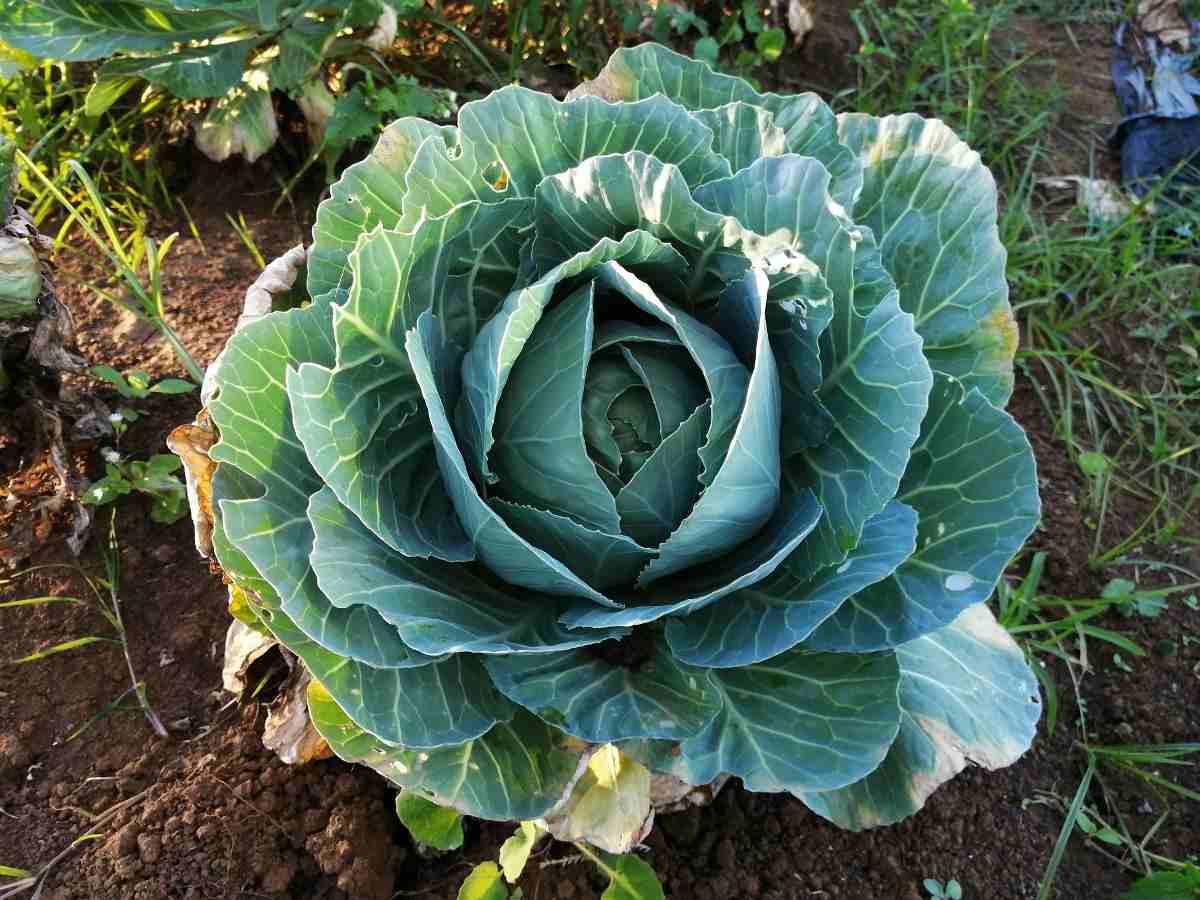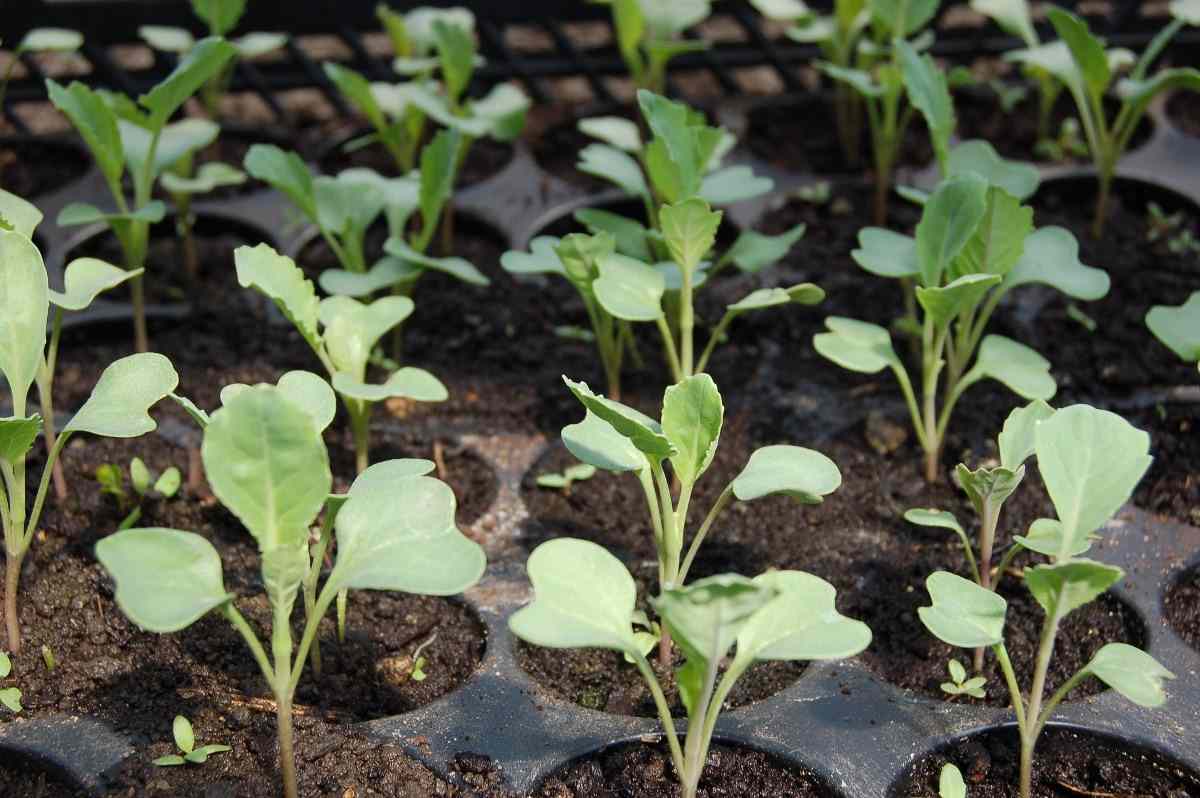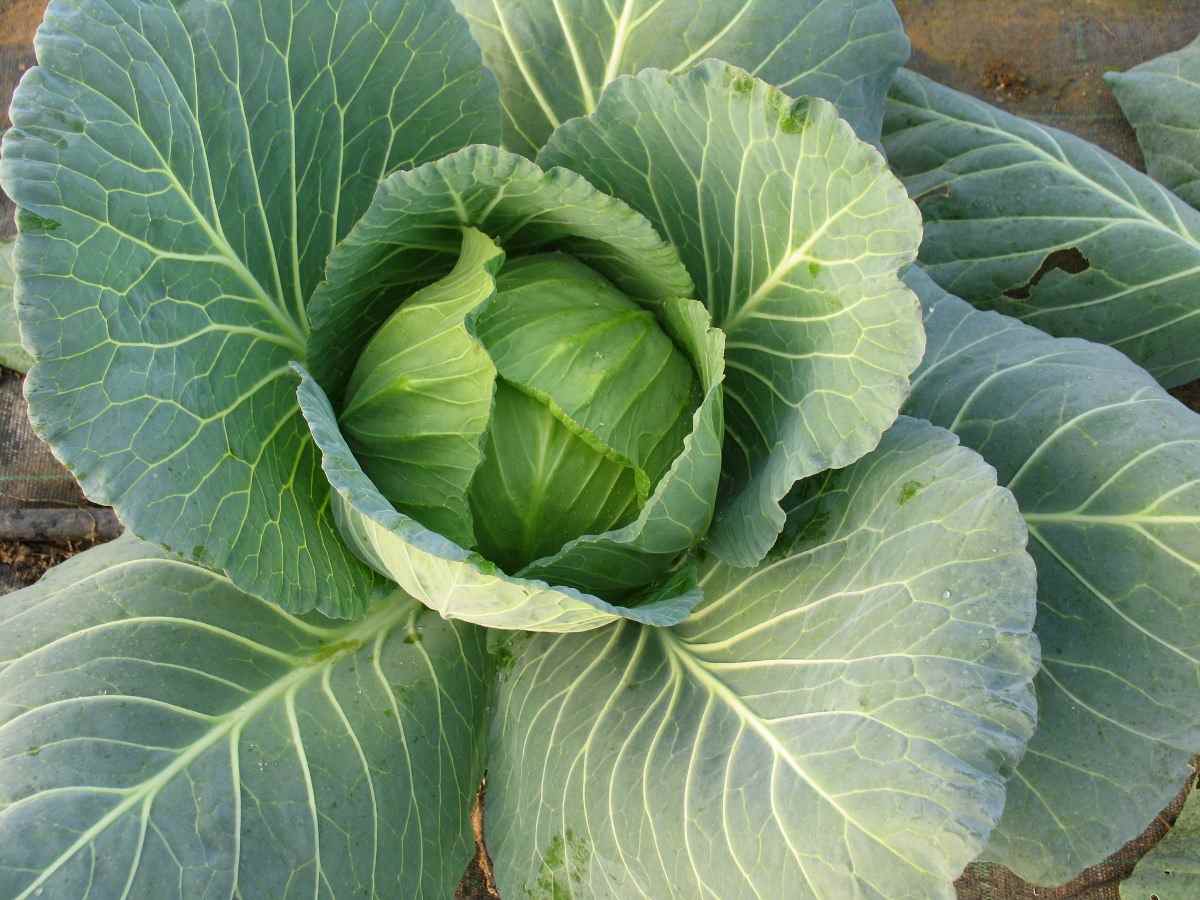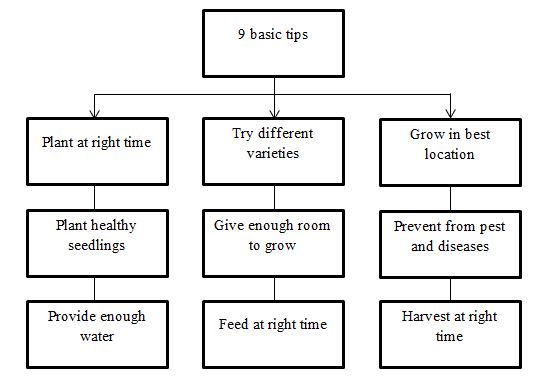Cabbage Growing Tips, Techniques, Ideas, and Secrets
Hello gardeners, we are back with a new and helpful topic today and the article is all about cabbage growing tips, techniques, ideas, and secrets. Do you want to grow a cabbage plant? Well and then you need to follow this complete article to start growing a perfect cabbage plant because in this article we are going to mention all the top tips, techniques, ideas, and secrets to growing a cabbage plant.
Introduction to Cabbage
Cabbage is a leafy green, red that it purple or white that is a pale green biennial plant grown as an annual vegetable plant for its dense leaved heads. It is descended from the wild cabbage, and it belongs to the “Cole plants” or brassicas, meaning it is closely related to broccoli and cauliflower; Brussels sprouts; and even Savoy cabbage
Cabbage usually weights from 500 to 1,000 grams or 1 to 2 lb. Smooth-leafed and even firm-headed green cabbages are the most common, with very smooth-leafed purple cabbages and even crinkle-leafed savoy cabbages of both colours being rarer. Under conditions of very long sunny days, such as those found at very high northern latitudes in summer, cabbages can grow very large.
A Guide to Cabbage Growing Tips, Ideas, Tricks, Techniques and Secrets

Overview Table of Cabbage Is Given Below
| Botanical Name | Brassica oleracea |
| Common Name | Cabbage and head cabbage |
| Plant Type | Biennial that is typically grown as annual |
| Mature Size | 12 to 18 inches tall and even wide |
| Sun Exposure | Full sun |
| Soil Type | Rich and well-drained |
| Soil pH | Neutral that is above 6.8 |
| Bloom Time | Typically does not flower |
| Flower Colour | Typically does not flower |
Soil Preparation Tips and Ideas
- What soil is best for growing cabbage?
Like most vegetables, even cabbage needs at least 6 hours of full sun each day and more is better. It also needs fertile, well-drained, and moist soil with plenty of rich organic matter. The soil pH should be between 6.5 and 6.8 for optimum and ideal growth and to discourage club root disease.
- How to prepare the soil for growing cabbage?
You need to prepare the soil for planting by mixing potting soil and compost in a 2:3 ratio.
Then sprinkle the seeds on the grow bed and then cover them very lightly with a thin layer of soil.
Cabbage usually requires regular watering. The best option to water your cabbage plants would be to use a watering can or even a sprinkler system. You need to make sure that the soil remains moist, especially when the plants are soaking up complete sunlight.
Cabbage Propagation Tips and Methods

- How to grow cabbage from seed
It’s possible to seek out cabbage seedlings at garden centers within the spring, but you’ll also start them yourself from seed. Make certain to read the seed packet carefully to work out days to maturity. You’ll be planting seeds nearly about 50 to 60 days before your region’s frost-free date. After filling together with your seed-starting mix, plant three or four seeds per cell a few quarters of an in. or 1/2 cm deep. Cabbage needs tons of bright sunlight to grow or plants will become leggy. I start tons of my plants under me grow lights. Once your seedlings have sprouted, then thin the littlest ones to stay your largest plant.
If you propose succession planting, you’ll direct-sow seed within the ground around July for a fall plant. Or plant seeds under lights to offer them a start for July planting.
- Planting cabbage seedlings within the garden
Because cabbage may be a cool-season plant, you’ll plant cabbage within the ground before your heat lovers, like tomatoes. The seed packet will assist you to count backward from your region’s frost-free date. However, you ought to still harden them off before planting them within the ground.
Pick a sunny spot within the garden with well-draining, friable soil. Amend the soil with much compost every week approximately before planting. When you’re able to dig them in, space your cabbage seedlings about 15 to 23 inches or 38 to 60 cm apart in rows that are 24 to 36 inches or 60 to 90 cm apart. The plants may look small now, but you would like them to possess the room to spread into that leafy mass throughout the season.
Planting and Spacing Tips for Growing Cabbage
You need to sow cabbage seeds a ½ inch deep spaced 1 inch or 2.5cm apart and thin plants to 18 to 24 inches or 45 to 61cm apart.
Transplant your cabbage to the garden when plants are 4 to six weeks old with 4 to five true leaves.
Set leggy or crooked stemmed plants deeply and you’ll need to bury 1 to 2 inches or 2.5 to 5cm of the most stem even up to only below the highest two sets of leaves.
You need to space seedlings 18 to 24 inches or 45 to 61cm apart in rows 24 to 36 inches or 61 to 91cm apart. You’ll space plants closer but the heads are going to be very smaller at maturity.
In early spring, you need to plant cabbage through black plastic or garden fabric set in situ to warm the soil.
Plant succession plants every fortnight or plant seeds and transplants at an equivalent time or plant early and midseason varieties at an equivalent time so that they are available to reap at different times.
You need to plant 4 to 8 cabbage plants for every household member.
9 Basic Tips for Growing Cabbage
In case if you miss this: How To Start A Vegetable Garden From Scratch.

Cabbage can be very easily grown almost anywhere and has very long been valued for its storage life and hardiness. That being said, cabbage can be very tricky to grow for the beginning gardener. The below-mentioned 9 tips for how to grow the perfect cabbage plant will have you on your way to cabbage-growing success.

1. Plant cabbage at the proper time
An important thing to recollect is cabbage likes cool temperatures. Cabbage won’t form ahead but will instead split or bolt if exposed to an excessive amount of heat or severe frost.
In cold winter areas, cabbage may be a spring and fall plant. Sow cabbage seeds indoors 8 weeks before the last spring frost for a spring plant and 14 weeks before the primary fall frost. Seeds sprout within 4 to 10 days. Cabbage seeds usually last up to 4 years.
2. Try growing different types of cabbage
If very warm temperatures may make growing traditional-headed cabbages very difficult then try Oriental and Savoy cabbage varieties.
- Head cabbage has green or red leaves and forms a decent rounded head. Early and even midseason varieties are very smaller and faster growing. Late or even long-season varieties are larger and store well. Varieties to undertake are Early Jersey Wakefield, Emerald Cross, Red Acre, Mammoth Red, and even Stone head.
- Savoy cabbage has very long crinkled leaves that form a looser head than other varieties. It is also milder and even sweeter than standard cabbage with a more delicate texture.
- Oriental cabbage usually grows into an oblong shape. Varieties include Napa, Bok Choy, and even Tatsoi.
3. Grow cabbage within the best location
Cabbage usually prefers well-draining rich soil. Amend the soil with compost and nitrogen-rich feed or cottonseed meal before planting to encourage leafy growth.
Choose a neighbourhood with full sun. Although cabbage prefers cooler temperatures, it requires much sunshine to grow well.
4. Give cabbage enough room
If you are using square-foot gardening, plant 1 cabbage per square. Otherwise, space plants 12 to 18 inches apart counting on the variability.
5. Plant vigorous healthy seedlings for the simplest cabbage
Give cabbage an honest start in life – choose very small and tight transplants and avoid leggy or overgrown transplants. Don’t let transplants dry out or become pot-bound. Seedlings planted too late might not form heads and should bolt and flower instead. When planting, bury the stem up to only below the primary set of leaves.
6. Find out how to stop and treat cabbage pests and diseases
Cabbage seems to be a magnet for a few common pests and diseases. Insects like cabbage worms, cutworms, snails, and slugs can ruin young cabbage leaves. Aphids are a symbol of water or heat stress. Employing a combination of methods works well to stop and treat pests.
Plant onions, radishes, and nasturtiums near cabbage to assist deter pests. Better to use row covers while plants are young.
To protect against cutworms, you need to place a protective collar around young plants. Strips of a newspaper are often used for this.
Handpick all the caterpillars each morning and night.
Spray cabbage infected with caterpillars with Bt (Bacillus Thuringiensis) and Spray aphids with water or even treat them with insecticidal soap.
To prevent the build-up of soil-borne diseases, better rotate where you plant cabbage annually. Wait 3 years before planting cabbage within the same spot. Remove and destroy affected plants.
To prevent disease, remove the whole plant after harvesting instead of leaving the roots within the ground.
7. Provide even watering for cabbage
Cabbage usually requires regular, even watering. Uneven watering pot end in stunted, split, or cracked heads. Heavy mulch will also help keep the soil cool and retain moisture.
8. Don’t let cabbage go hungry
Cabbage may be a heavy feeder – it depletes the soil very quickly. Feed young plants with a fish emulsion and even seaweed solution 2 weeks after planting. Feed again 3 weeks later, and feed monthly throughout the season.
9. Harvest cabbage correctly
Cabbage tolerates light freezes – the flavour improves with the weather. Harvest just before temperatures heat up. Cabbage is prepared to reap in about 80 to 180 days when grown from seed and in approximately 65 to 105 days if grown from transplants (depending upon the variety).
You need to harvest head cabbage when heads are well-formed and firm. Harvest head cabbage by cutting the bottom with a pointy knife. Need a second plant? Cut the top off high on the plant, leaving as many outer leaves as possible. The plant will usually send up as many as 6 new heads – harvest when about tennis ball-size.
Begin harvesting leaf cabbage a few months after planting by harvesting the outer leaves using the cut-and-come-again method. to try to do this, harvest only the older outer leaves and permit the middle of the plant to send new leaves.
Once the harvest is complete, remove the roots and stem to stop the soil-borne disease.
Watering Tips for Growing Cabbage
- How often should Cabbage need to be watered?
You need to water regularly by giving plants 1 to 1.5 inches of water weekly. Just before planting, you need to give cabbage a continuous food supply by mixing a slow-release plant food into the plant’s soil. You need to lay down a 3-inch layer of mulch to help retain moisture and then keep weeds at bay. Then harvest cabbage when the head is firm.
- How often do I water cabbage seedlings?
Cabbage usually requires consistently moist soil. While it will not tolerate sitting in wet and soggy soil, it needs regular watering to produce its leafy heads. Better water your cabbage once a week, by applying 1 1/2 inches of water to the soil. If the soil is too dry to a depth of 3 inches, then water more frequently.
Cabbage Fertilizing Tips
- Cabbage fertilizer basics
Enriching garden soil with organic compost is one of the simplest ways to provide the nutrients necessary for feeding cabbage plants. When using homemade compost, incorporate 2 to 4 inches or 5 to 10 cm. of compost into the garden soil in late fall or even early winter. This provides the compost times to completely decay therefore the valuable nutrients are ready for the plants within the spring.
Instead of using compost for feeding cabbage plants, chemical fertilizers are often added to the garden soil. Choose a balanced fertilizer, like 10-10-10. This will be tilled directly into the garden bed as its being prepared for spring planting. Testing the soil before fertilizing cabbages is suggested.
The test results are often wont to amend the soil and structure for any nutritional deficiencies. Cabbages prefer a soil pH of 6.0 to 6.5 and need adequate amounts of micronutrients like calcium, magnesium, sulphur, and zinc for optimal growth.
- When to feed cabbages
When starting seeds indoors, begin fertilizing cabbage plants once they need two to four true leaves. A diluted solution of a balanced (10-10-10) liquid fertilizer, weak compost tea, or fish emulsion is suggested. This will be repeated every fortnight.
Once after cabbage plants are transplanted into your prepared garden bed, then continue applying cabbage fertilizer every 3 to 4 weeks until heads begin to make. Avoid employing a fertilizer with high levels of nitrogen, as this encourages excess foliage growth and reduced head formation.
- Main tips for fertilizing cabbages
You need to always follow the manufacturer’s directions when mixing and applying cabbage fertilizer. Incorporate a very slow-release, granular, or pelleted fertilizer into the soil before planting. It is better to switch to a good liquid fertilizer or side-dress cabbage plants by burying granular or pelleted fertilizer in shallow trenches in and around plants. Heavy rainfalls can dissolve solid sorts of fertilizer lying on the garden surface. This will splatter heavy concentrations of fertilizer directly onto cabbages causing leaf burn and damage to the plants.
Avoid additional applications of fertilizer after cabbages begin to make heads. This will cause a rapid climb leading to a split or cracked heads.
You need to water cabbage plants before the soil dries completely. Not only do cabbage plants prefer consistently moist soil, but water is important for absorbing nutrients from the soil.
Tips for Growing Winter Cabbage
You need to sow seeds directly into a prepared bed in midsummer. Some of the gardeners might wonder when to plant winter cabbage. As long as you wait until midsummer, you’ll sow anytime until late summer or maybe early fall in mild climates. Seeds will germinate in temperatures as low as 4°C.
Successively sow hebdomadally for a plant that will last through the winter. Winter cabbage cultivation is that the same as early-season cabbage. Care needs to be taken to not get the young leaves exposed to frost or they’re going to wither and die.
Winter plants need less frequent irrigation since most of their moisture is supplied naturally. Take care that the world isn’t overly soggy and drains well. Cabbages that are in boggy soil will tend to be separate.
- Cabbage winter growing methods
You may start the seeds in flats indoors or direct inseminate from late July to early August. All the young cabbage may burn in intense sunlight, so provide row covers. These will usually help protect them from cabbage flies and other pests too. Row covers have the additional advantage of keeping the warmth in when freezes occur. This may protect the plants from the cold burn.
You need to side-dress with manure to feed the maturing heads. Make sure that the seedbed has good drainage to stop ice damage to the roots in cold growing. In all the temperate climates, the heads “hold” outside quite nicely as growth slows with a colder climate.
Keeping cabbages overwinter in some zones isn’t possible. You’ll need to harvest heads in early winter where temperatures plunge to stop splitting. Try growing cabbage in containers also. They need shallow roots and produce well in large containers.
Tips for Controlling Pests and Diseases of Cabbage
1. You need to plant only a pathogen-free seed; rotate plants and applications of appropriate fungicides control disease when present.
2. Control of disease depends on sanitary practices; treat seeds with predicament before planting; rotate plants; plant in a neighbourhood with good soil drainage; remove all cruciferous weeds which can act as a reservoir for the fungus.
3. the first method of controlling plant disease is thru the utilization of excellent sanitation practices; rotate plants to non-cruciferous plants every 2 years; plant resistant varieties; control cruciferous weed species which can act as a reservoir for bacteria and plant pathogen-free seed.
4. Rotate the plant to non-hosts for a minimum of 3 years; control weeds; avoid dense growth by planting inadequately spaced rows; apply appropriate foliar fungicides
5. The number of sclerotia within the soil is often reduced by plowing plant debris deep into the soil and rotating plants every 3 years with non-host plants; severe infestations may require control through the appliance of appropriate fungicide
6. Chemical treatments aren’t available for bacterial plant disease, control relies on cultural practices; rotate plants; plant cabbage in well-draining soils or raised beds; only harvest heads once they are dry; avoid damaging heads during harvest.
7. Cabbage doesn’t have high levels of resistance to blackleg and fungicides use is uneconomical; use disease-free seed or treat with predicament to get rid of fungus before planting; remove and destroy plant debris after harvest or plow deeply into the soil.
8. Remove all plant debris after harvest; rotate with non-brassicas; application of appropriate fungicides could also be required if symptoms of the disease are present
9. Organic methods of controlling the Spodoptera exigua include biological control by natural enemies which parasitize the larvae and therefore the application of Bacillus thuringiensis; there are chemicals available for commercial control but many who are available for the house garden do not provide adequate control of the larvae.
10. If aphid population is restricted to only a couple of leaves or shoots then the infestation are often pruned bent to provide control; check transplants for aphids before planting; use tolerant varieties if available; reflective mulches like silver-coloured plastic can deter aphids from feeding on plants; sturdy plants are often sprayed with a robust jet of water to knock aphids from leaves and insecticides are generally only required to treat aphids if the infestation is extremely high – plants generally tolerate low and medium level infestation; insecticidal soaps or oils like neem or vegetable oil are usually the simplest methods of control; always check the labels of the products for specific usage guidelines before using.
Cabbage Harvesting Tips
The heads of cabbage take nearly about 7 to 8 weeks to reach maturity. As soon as you see clearly defined heads on your cabbage plants, then you can harvest them. For instance, cabbage seeds sown in spring will be usually ready for harvest in November.
To check the maturity of the cabbage, you need to simply squeeze the cabbage heads. If they feel firm, then you can go ahead and harvest them.
Better use a sharp knife to harvest the cabbage heads for consumption. This can ensure that the roots of the plant do not get damaged.
You need to cut 1 to 2 inches above the root level along with 2 to 3 outer leaves to protect the edible part from damage.
It is good and best to cut as much as you need for immediate consumption. However, if you are harvesting in advance, then you can store fresh cabbage for about 2 to 3 days at room temperature. However, if you put them in the fridge, they will remain fresh for nearly 2 weeks.
- Flower Garden Designs and Layouts for Beginners
- Planting and Spacing Techniques in Papaya: A Beginner’s Guide
- Growing Gold: Essential Techniques for Planting Pineapples
- How to Make Kalanchoe Plant Bushy: Home Remedies and Solutions
- 11 Reasons Why Your Gardenia is Not Blooming: Home Remedies and Solutions
- Eco Elegance: The Guide to Designing a Drought-Tolerant Landscape
- Gardening on a Slope: Strategies for Hillside Landscaping
- Nourish and Flourish: Top Organic Mulches for Thriving House Plants
- Everything You Want to Know about Indian Mogra Flower: Discover Uses and Growing
- Green Thumb Success: Expert Tips for Cultivating Greenhouse Pumpkins All Year Round
- Maximize Growth & Flavor: The Ultimate Guide to Companion Planting in Herb Gardens
- How to Control Rhododendron Problems Naturally: Home Remedies and Organic Ways to Fix Them
- Natural Magic: The Remarkable Benefits of Cinnamon for Plants
- Best Steps to Revive Dying Tulip with Natural and Organic Treatment
- 10 Reasons Why Your Angel Trumpet is Not Blooming: Remedies and Treatment
- How to Fix Periwinkle Leaf and Flower-Related Problems: Natural Remedies and Solutions
- How to Fix Zinnias Leaf and Flower Problems: Discover Natural and Home Remedies
- Organic Steps to Induce Lemon Tree Flowers: A Comprehensive Guide
- Bloom Booster: Crafting the Perfect Homemade Bougainvillea Fertilizer
- Optimizing Growth: A Guide to Applying NPK Fertilizer for Potted Plants
- 10 Best Homemade Fertilizers for Rubber Plant: DIY Recipes and Application Method